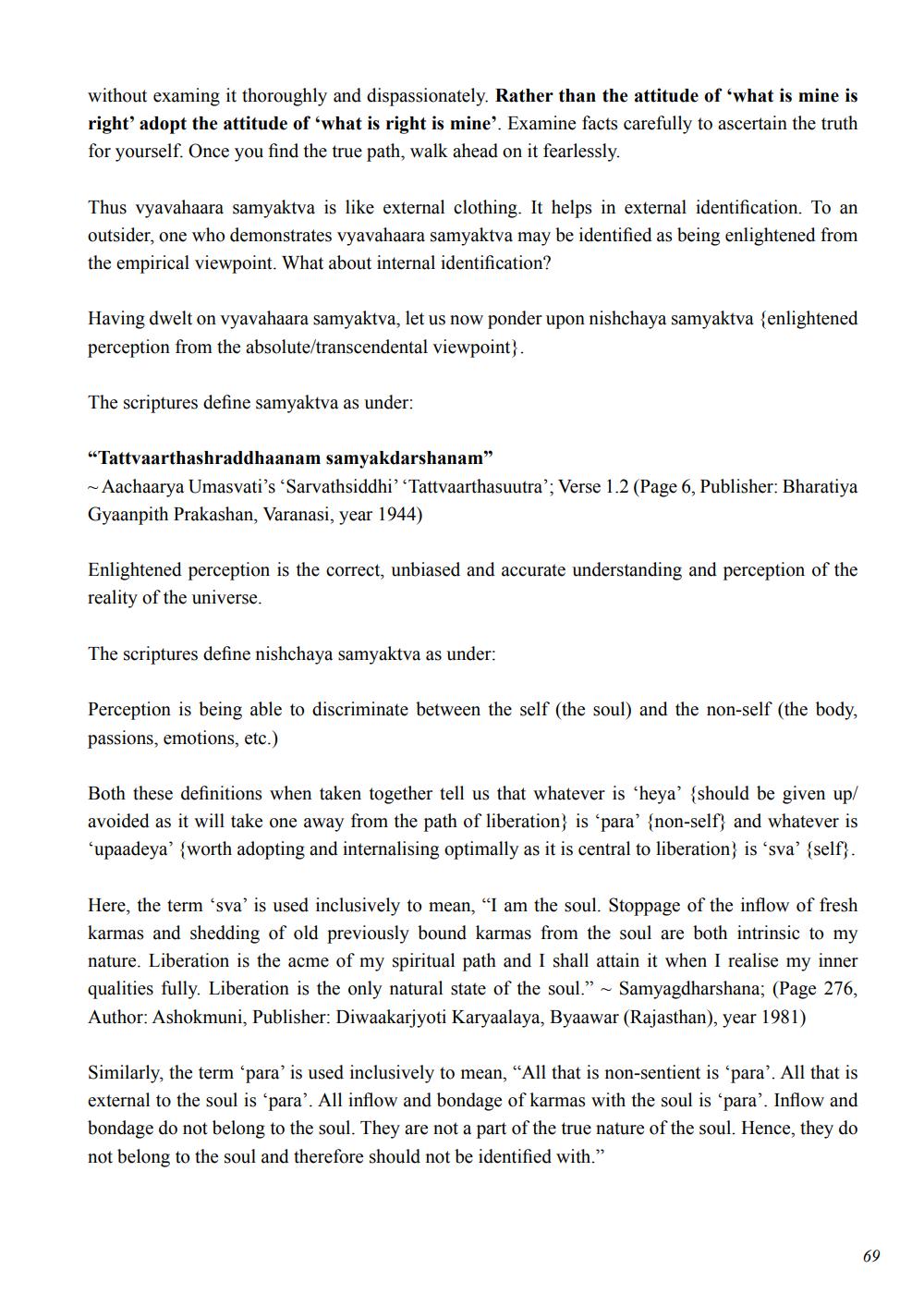________________
without examing it thoroughly and dispassionately. Rather than the attitude of 'what is mine is right adopt the attitude of 'what is right is mine'. Examine facts carefully to ascertain the truth for yourself. Once you find the true path, walk ahead on it fearlessly.
Thus vyavahaara samyaktva is like external clothing. It helps in external identification. To an outsider, one who demonstrates vyavahaara samyaktva may be identified as being enlightened from the empirical viewpoint. What about internal identification?
Having dwelt on vyavahaara samyaktva, let us now ponder upon nishchaya samyaktva {enlightened perception from the absolute/transcendental viewpoint}.
The scriptures define samyaktva as under:
“Tattvaarthashraddhaanam samyakdarshanam" ~ Aachaarya Umasvati’s ‘Sarvathsiddhi' 'Tattvaarthasuutra'; Verse 1.2 (Page 6, Publisher: Bharatiya Gyaanpith Prakashan, Varanasi, year 1944)
Enlightened perception is the correct, unbiased and accurate understanding and perception of the reality of the universe.
The scriptures define nishchaya samyaktva as under:
Perception is being able to discriminate between the self (the soul) and the non-self (the body, passions, emotions, etc.)
Both these definitions when taken together tell us that whatever is 'heya' {should be given up/ avoided as it will take one away from the path of liberation is 'para' {non-self; and whatever is ‘upaadeya' {worth adopting and internalising optimally as it is central to liberation) is 'sva' {self).
Here, the term 'sva' is used inclusively to mean, “I am the soul. Stoppage of the inflow of fresh karmas and shedding of old previously bound karmas from the soul are both intrinsic to my nature. Liberation is the acme of my spiritual path and I shall attain it when I realise my inner qualities fully. Liberation is the only natural state of the soul." ~ Samyagdharshana; (Page 276, Author: Ashokmuni, Publisher: Diwaakarjyoti Karyaalaya, Byaawar (Rajasthan), year 1981)
Similarly, the term 'para' is used inclusively to mean, “All that is non-sentient is ‘para'. All that is external to the soul is 'para'. All inflow and bondage of karmas with the soul is 'para'. Inflow and bondage do not belong to the soul. They are not a part of the true nature of the soul. Hence, they do not belong to the soul and therefore should not be identified with."
69




